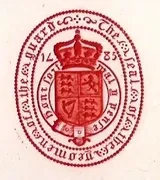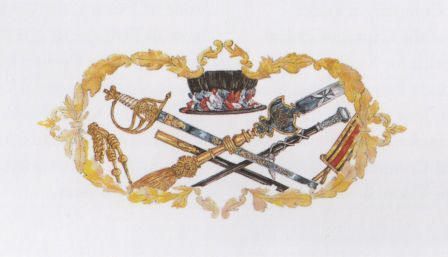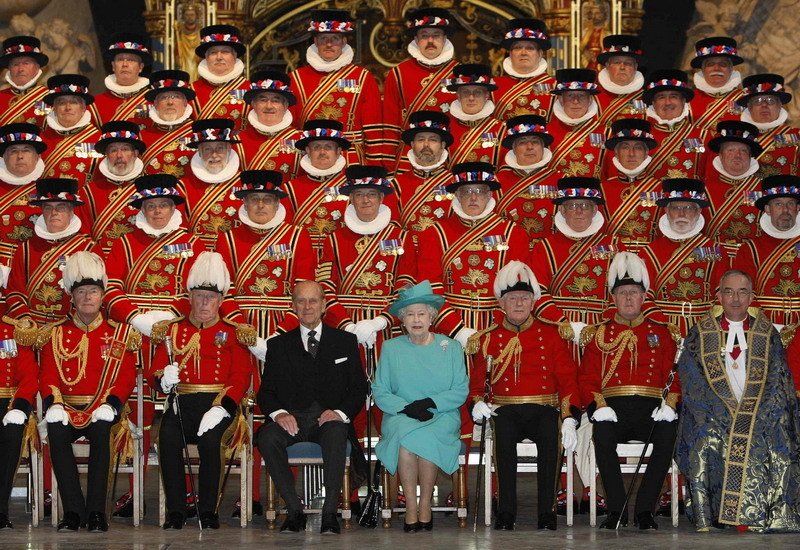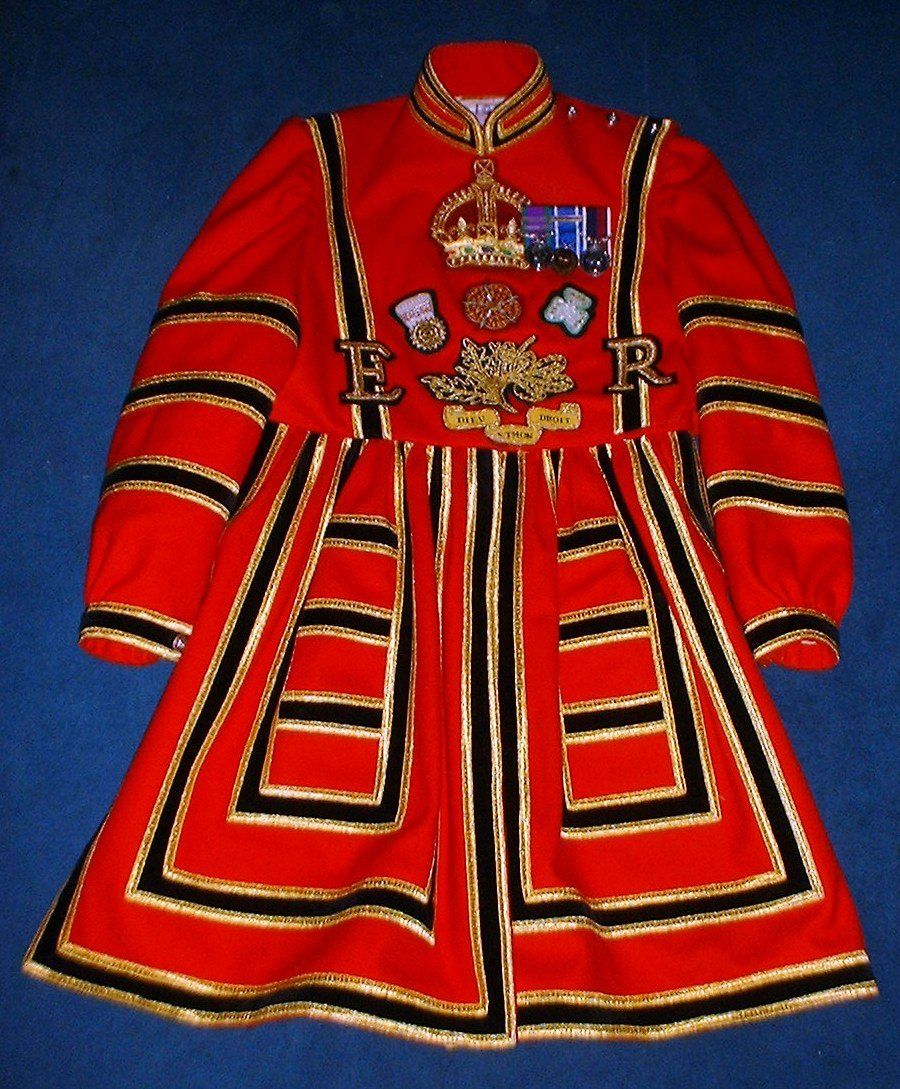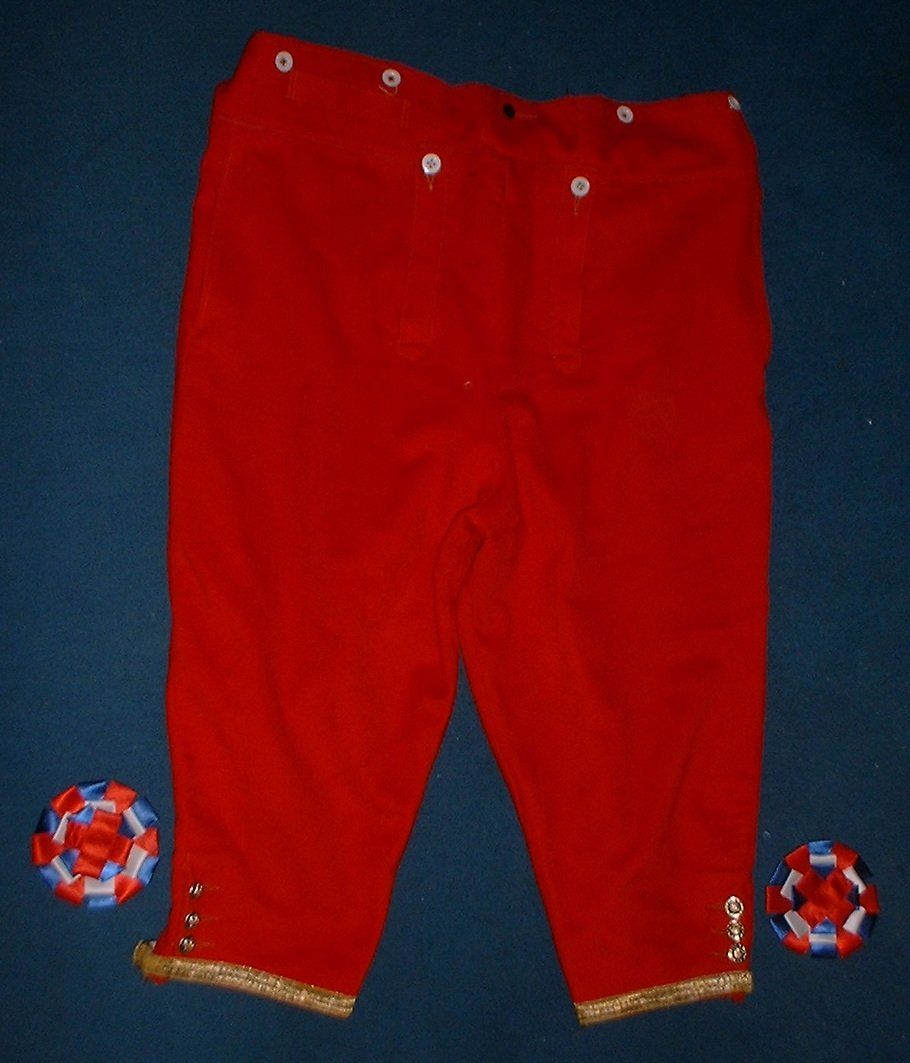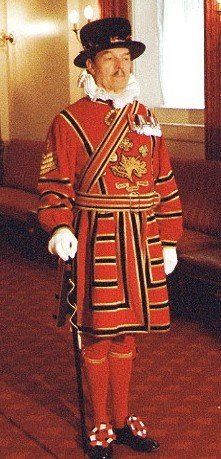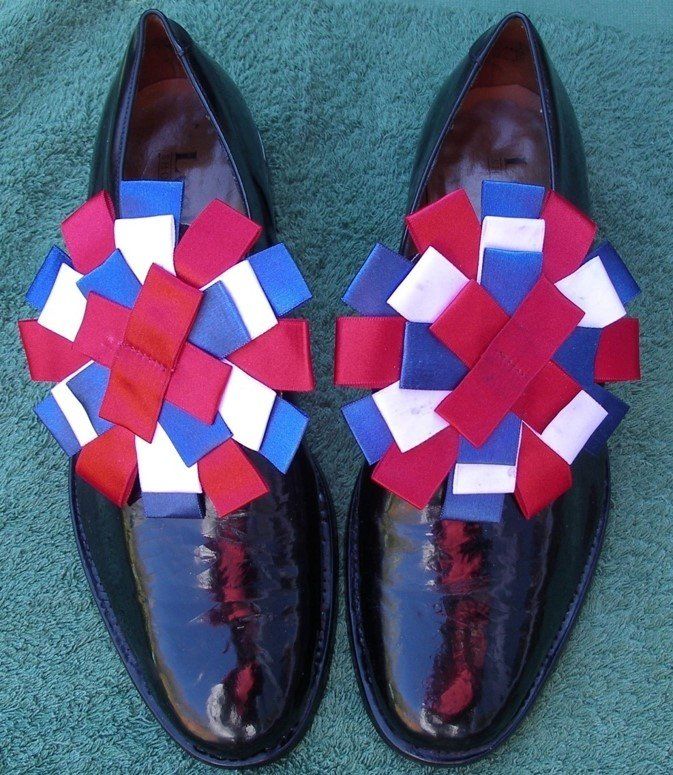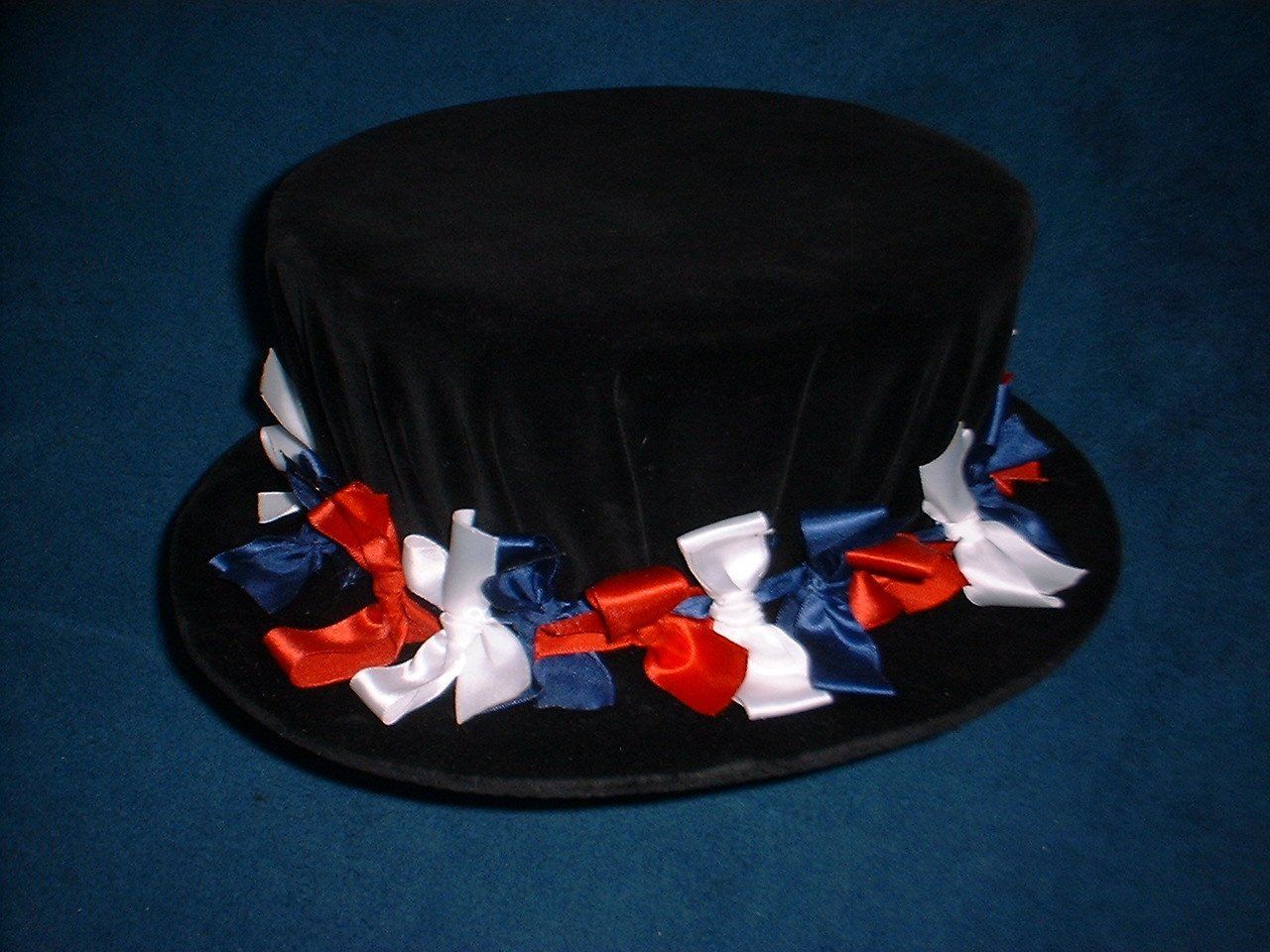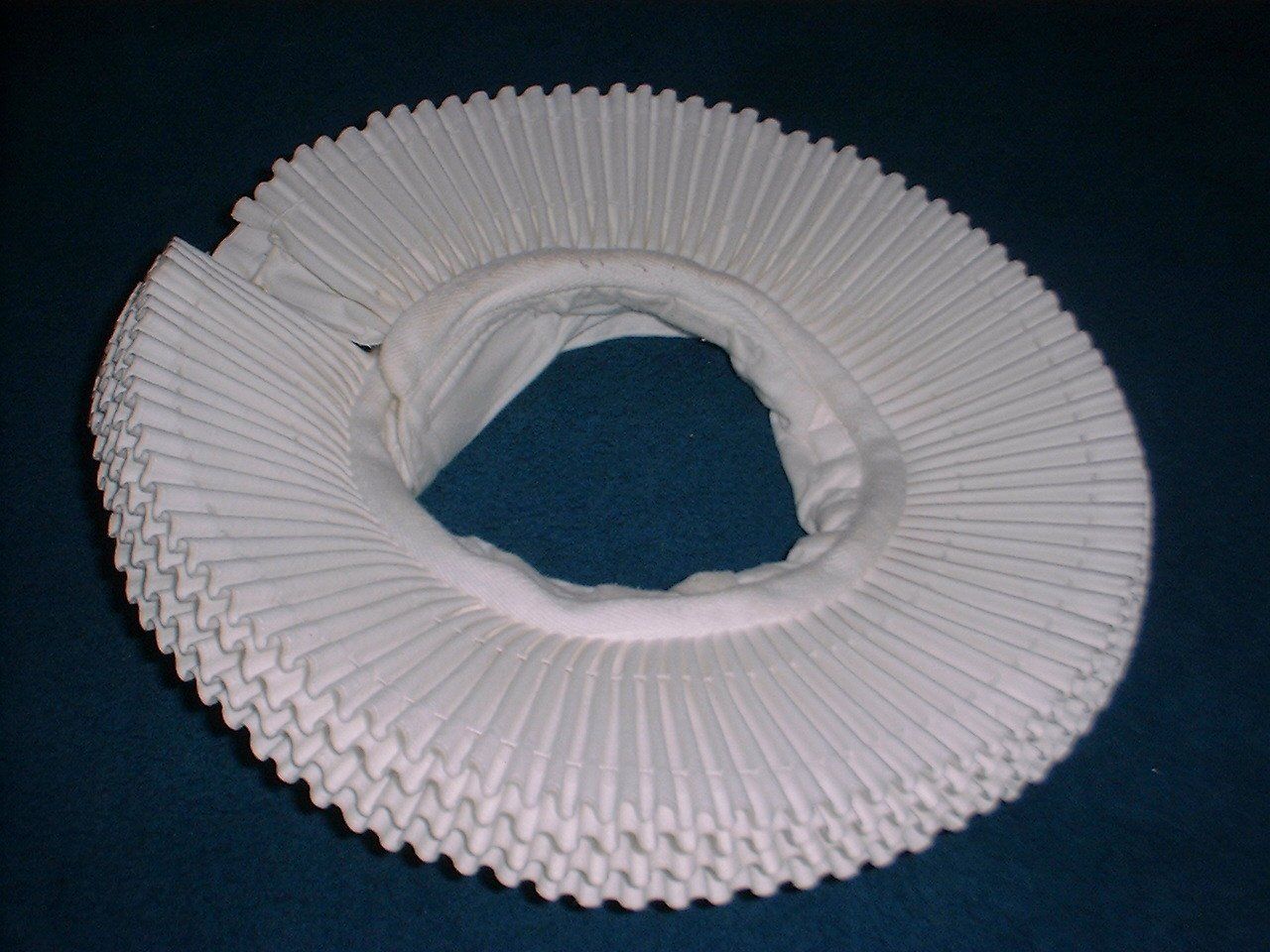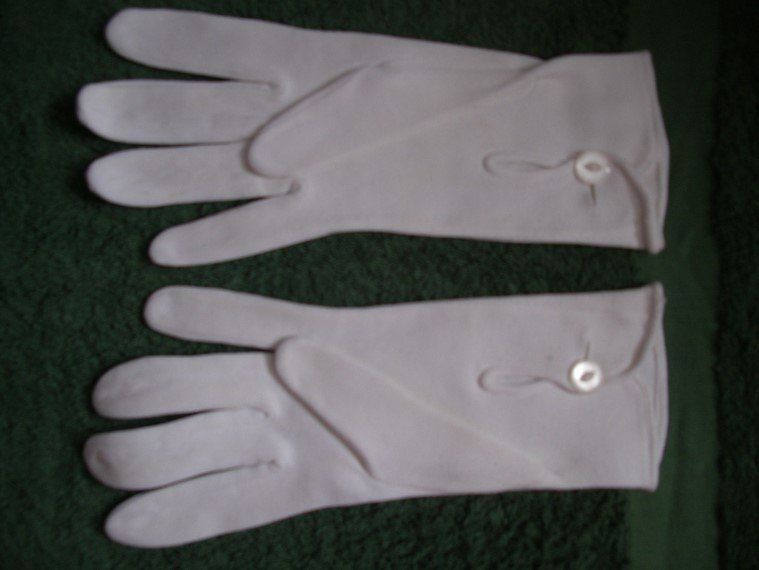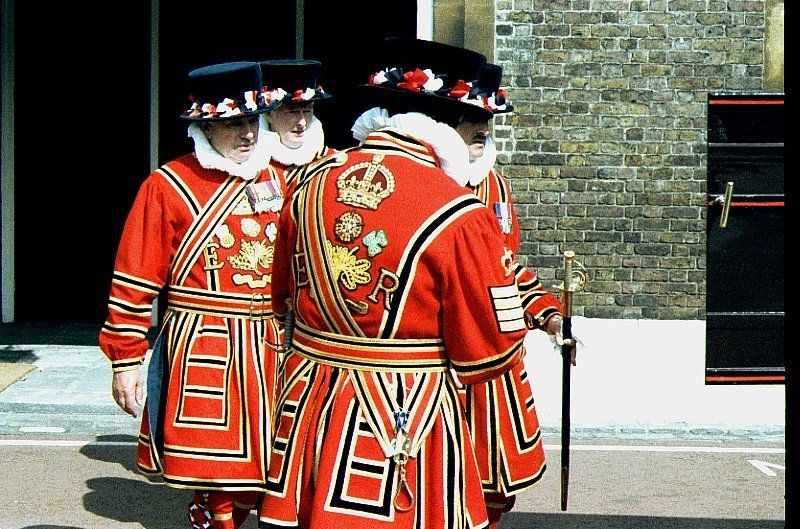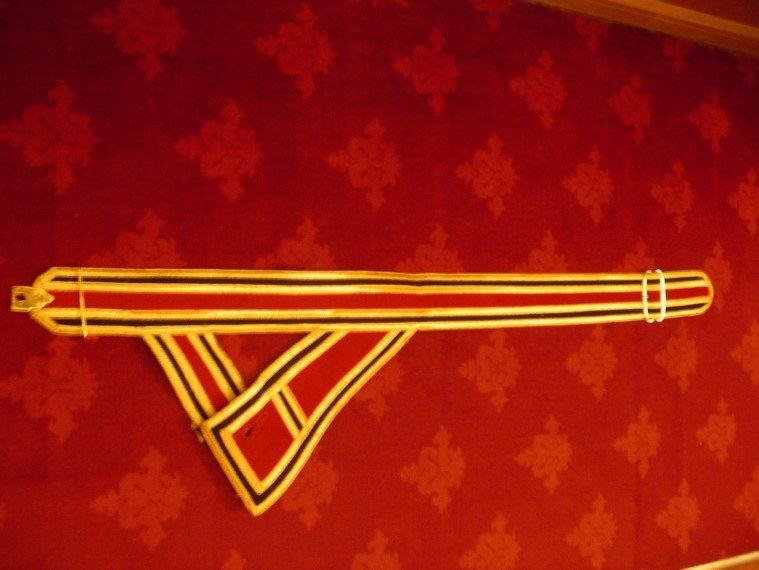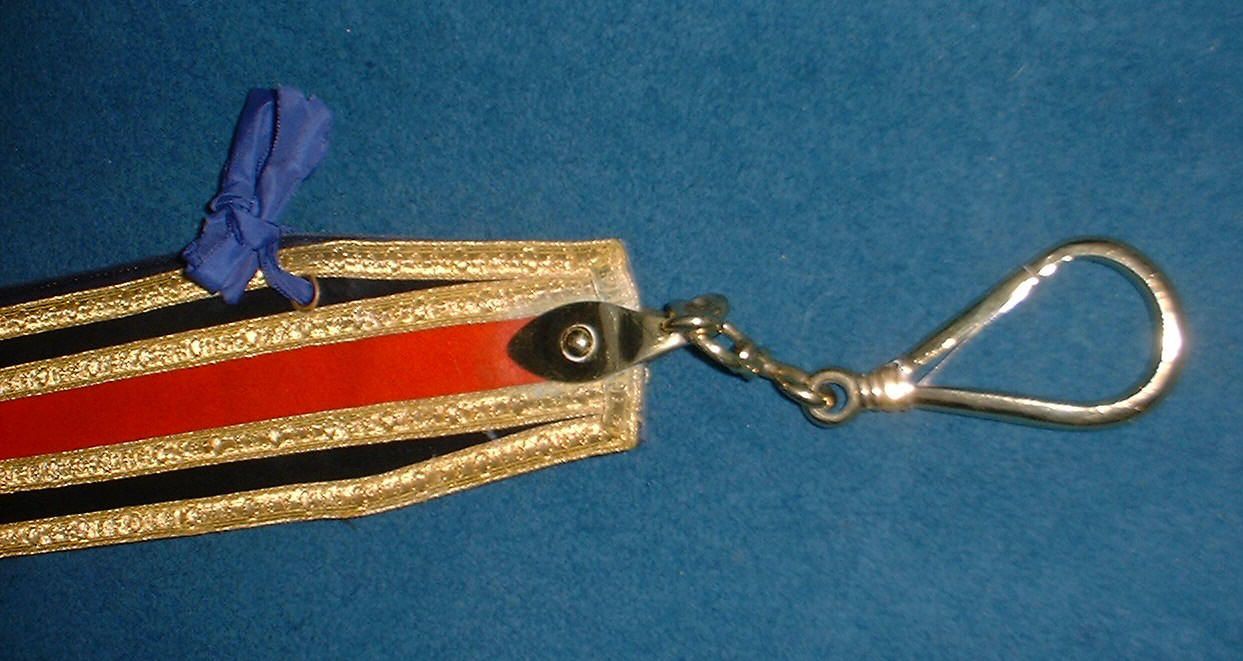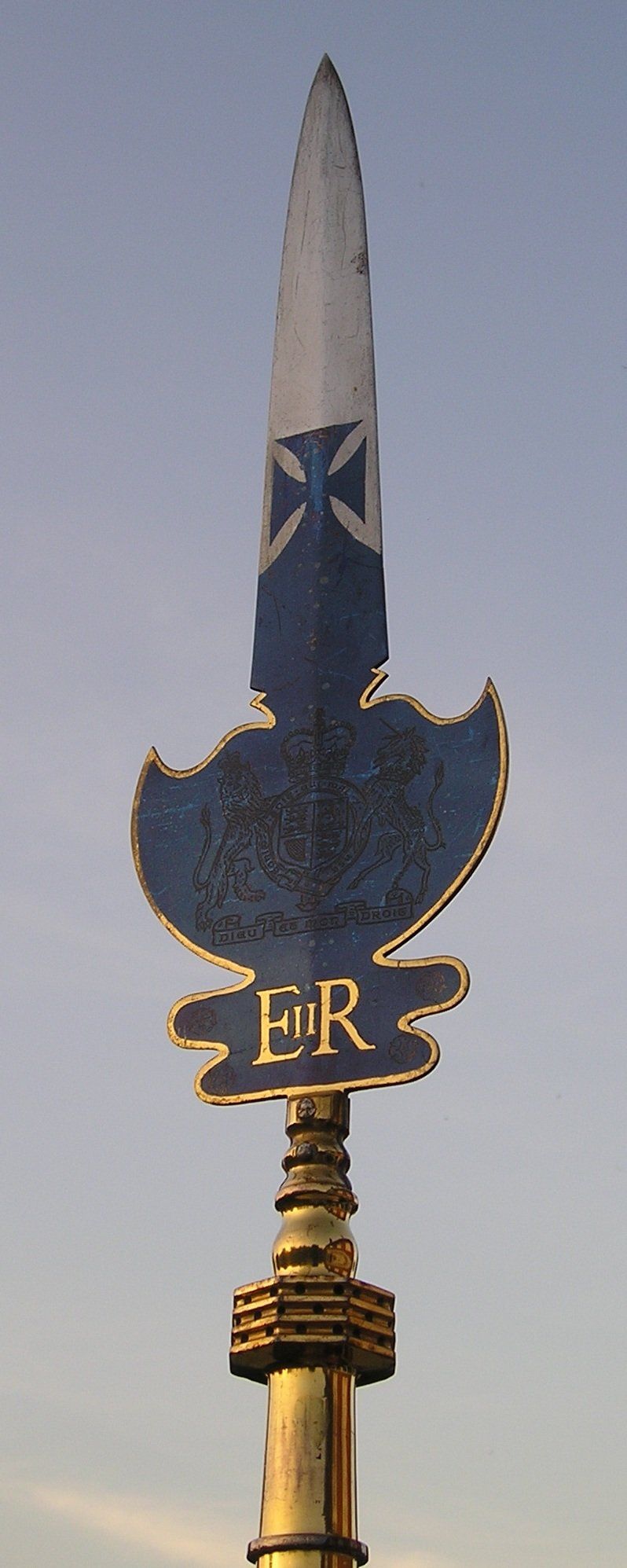The weight of the tunic, breeches, hat and ruff combined is 16lbs (7.2kg); the sword weighs 2lb (1.5kg) and the partisan weighs 7lbs (3.15kg). The total marching weight of the Body Guard kit is 25lbs (11.8kg).
DOUBLET - Scarlet cloth Tudor, embroidered, back and front cut whole. Full sleeves gathered into wrist band with one hole and small button. Four skirts pleated into waist. Three small buttons and holes on left shoulder, and five small buttons and holes on left side seam. Blue Velvet and Gold lace shoulder strap on left shoulder with one large button. Trimmings: 3/8 inch gold spot lace and blue velvet. Linings: white cotton, body and sleeves, blue shalloon skirts.
BREECHES - Scarlet cloth, split falls, ¾ inch gold spot lace garter, with gilt buckle at knee; and three small buttons and holes. Red, white and blue ribbon rosettes at the knee.
TUDOR CROWN - found below the tunic's collar. This, along with the emblems beneath it, is also found on the rear of the tunic.
EMBROIDERY - The cluster of emblems below the Tudor Crown represent the Thistle (Scotland), the Tudor Rose (England) and the Shamrock (Ireland) above a Hawthorn bush (where Richard III's crown was found after the Battle of Bosworth 1485). Beneath the Hawthorn is the motto Dieu Et Mon Droit (God and My Right). Either side of the hawthorn is ER (Elizabeth Regina)
BUTTONS - Gilt, crown and German border.
